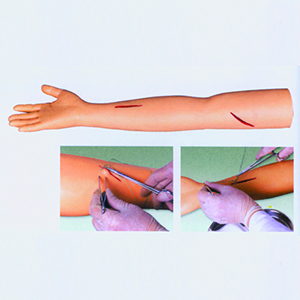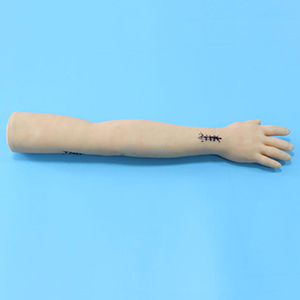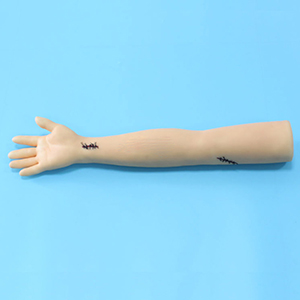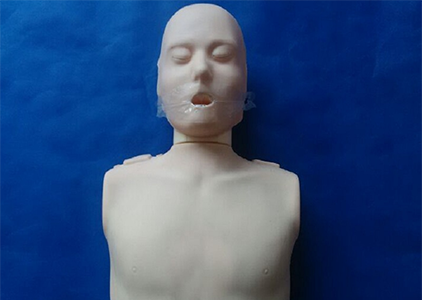
Suturing is a vital basic skill in medical study and clinical training. For medical students, mastering this skill is often an important step toward clinical practice. In reality, however, learning to suture is not easy: students need to be familiar with the complex anatomy of human tissue, but also need to master the strength, precision and speed of the suture. The surgical arm suture training model has become an important tool in many medical teaching institutions because of its real simulation experience. Today, we will easily explore the value of this model in clinical education and analyze its practical effects through case studies.
Intuitive experience: From classroom to simulation

Surgical arm Suture training model
Traditional suture training is mainly theoretical, such as through textbooks, video explanations or simple classroom demonstrations. While these methods help students understand the basic steps of stitching, they lack hands-on experience. The surgical arm suture training model fills this gap well:
- Simulated human tissue: These models are often made of highly simulated materials, simulating hierarchies such as skin, fat, and muscle, and are able to provide tactile feedback close to real surgery. Students can feel the resistance of the needle and thread passing through the tissue, which is very similar to the clinical practice.
Repeatable: The model allows students to practice over and over until they have mastered the suture technique without fear of affecting patient safety.
Case study: From novice to proficient
Xiao Li, a second-year medical student, once shared her learning experience. In the initial stitching exercises, she could only awkwardly push the needle across the surface of the model, often resulting in "too deep" or "too shallow" problems due to poor force control. However, after a few weeks of training with the surgical arm suture model, she not only mastered the Angle and force of needle and thread puncture, but also learned different suture techniques (such as simple suture, continuous suture, and mattress suture). This progress made her confident in her later clinical practice, and she was also praised by the doctor who taught her.
Similar cases are common. According to the data of a medical teaching study, the clinical success rate of students who trained with the suture training model was 28% higher than that of students who did not use the model, and the operation time was 15% shorter.
Clinical significance: accurate, safe and efficient
The value of the surgical arm suture training model is not only reflected in the learning stage of students, but also has far-reaching significance for future clinical practice:

1. Develop suture accuracy
The quality of suture directly affects the healing effect of patients. Through model training, students can master key skills such as needle distance control and knot tightness, so as to complete surgery more accurately in actual operation.
2. Reduce medical risks
Inadequately trained medical students may result in postoperative infection or scar growth due to improper procedures. Through simulation training, students have a high level of skill before entering the operating room, thus reducing the rate of surgical errors.
3. Improve operation efficiency
In the clinic, suture is an operation that needs to be done quickly, especially in emergency situations. The training model helps students master the basic skills of suture and shorten the operation time.
Science support in easy learning

The suture training model is not only a good helper for medical students, but also supported by many educational studies. For example, a study by a top medical school found that students who used a suture-trained model scored 92% higher in operational satisfaction than a control group who did not receive simulation training (68%). The study also noted that this training method can help students develop surgical thinking and hand-eye coordination at an early stage.
In addition, the "zero risk" environment of this model also makes it easier for students to learn from mistakes without worrying about causing discomfort or risk to patients. This psychological relaxation helps students focus more on learning and improving their skills.
Conclusion: The ideal starting point for suturing skills
The importance of surgical arm suture training model in medical education cannot be ignored. For medical students, it is not only a "stepping stone" to enter clinical practice, but also a tool to make learning easy and interesting. Through the training of the model, students can practice repeatedly in a safe and controlled environment, improve the accuracy and proficiency of the suture, and lay a solid foundation for future clinical operations.
You may also wonder if the next time in the operating room, behind the skilled suture skills of the doctors, is there such a humble but extremely important training model? The answer is obvious!







Sophie Asveld
February 14, 2019
Email is a crucial channel in any marketing mix, and never has this been truer than for today’s entrepreneur. Curious what to say.
Sophie Asveld
February 14, 2019
Email is a crucial channel in any marketing mix, and never has this been truer than for today’s entrepreneur. Curious what to say.